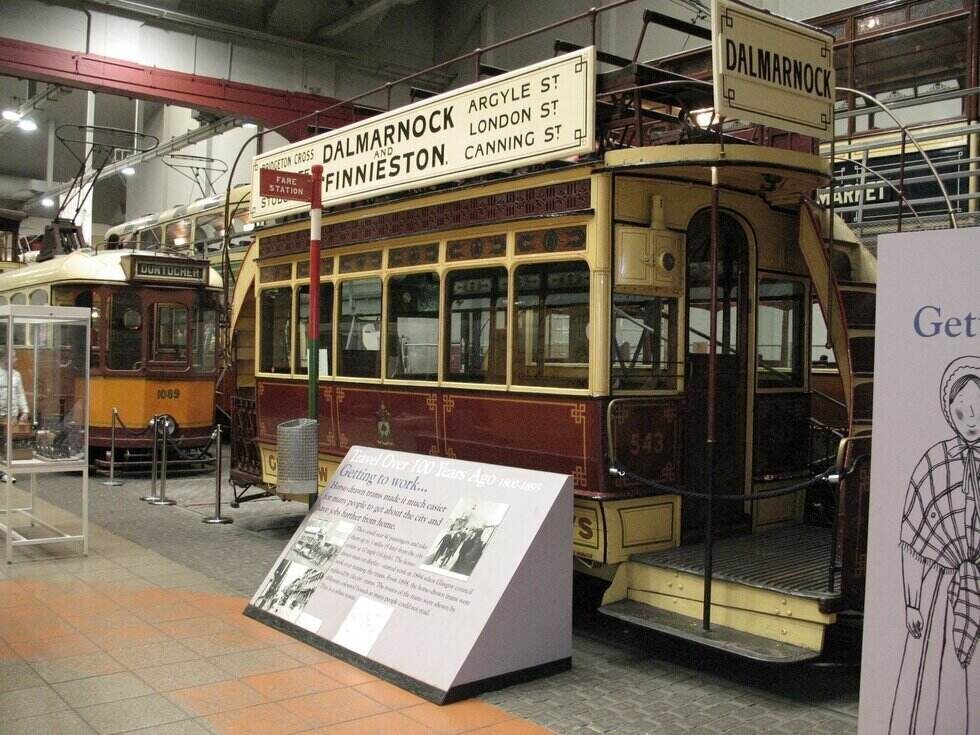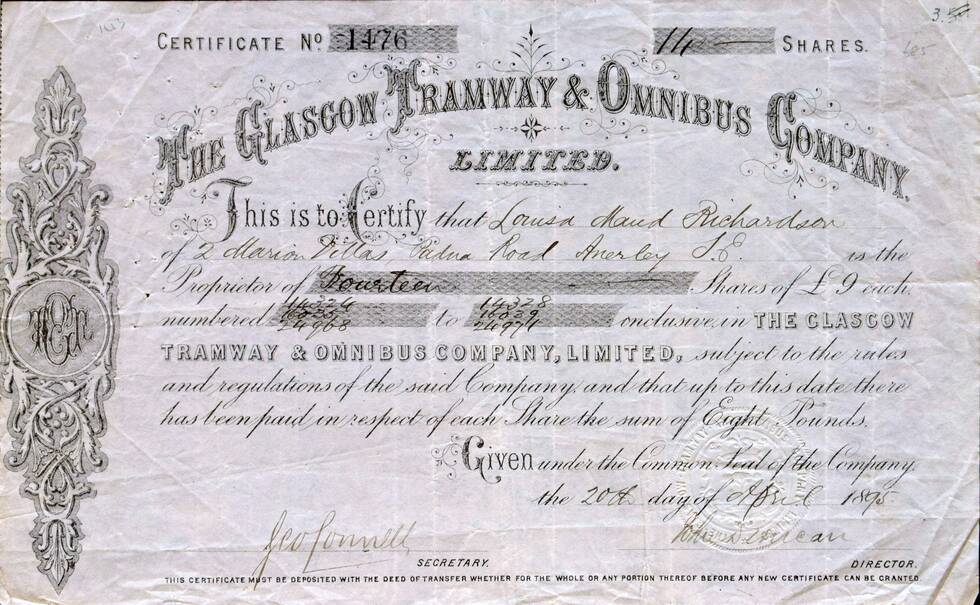150 years ago today, on 19th August 1872, Glasgow’s first horse-drawn tramway began to operate. Its first line ran from St. George’s Cross to Eglinton Toll, via New City Road and Jamaica Bridge. The tramway was operated by the Glasgow Tramway and Omnibus Company and was the second horse-drawn tramway to open in Scotland – Edinburgh’s first line having opened on 6th November 1871.

Two horse drawn tramcars – 243 and 255 – heading northwards along Jamaica Street in Glasgow, sometime after 1875. Photograph by George Washington Wilson, reproduced as a postcard.
The tramway grew rapidly with 25 miles of double track, 233 tramcars, 2,253 horses, and 254 mules. Glasgow’s tramway eventually became the second largest in the United Kingdom.
The Company built its own depots and crushing mills. It made and repaired the horses’ harnesses, and later began to build its own tramcars. Unusually for the time, it provided four tenements of ‘superior dwelling houses’ for its employees at Scotstoun. It was also the first company to paint its tramcars different colours to indicate which routes they were working on.
By 30th June 1894 the tramway was carrying 54 million passengers a year. At this point, Glasgow Corporation decided not to renew the Company’s lease, and on 1st July the Corporation started its own service instead. Glasgow thus became the first city in Great Britain to own and operate its own municipal tram service. It was a great success, and by the end of the century Glasgow Corporation Tramways’ passengers numbered one-fifth of the total number conveyed by all the tramways of England and Wales.
The Corporation and Company parted on bad terms, with the Corporation accusing the Company of refusing to sell any of its trams, horses or other assets to them. The Company, who denied this, continued at first to operate two lines, until these were also taken over by the Corporation in 1896.
None of the Glasgow Tramway and Omnibus Company’s horse trams are known to have survived. However, a splendid example of one of the Corporation’s original horse trams – No. 543, built in 1893 – can be seen at the Glasgow Riverside Museum of Transport.
Glasgow Corporation horse tram 543 on display at the Glasgow Riverside Museum of Transport. Photograph by Paul Abell.

The history of the Glasgow Tramway and Omnibus Company is described in ‘The Glasgow Horse Tramways’ by Struan Robertson (published by the Scottish Tramway and Transport Society in 2000), available in the Museum’s library.
Our archives also contain a share certificate issued by the Company in 1895, towards the end of its existence.

Share certificate issued by Glasgow Tramway and Omnibus Company to Louisa Maud Richardson in 1895 (National Tramway Museum).
